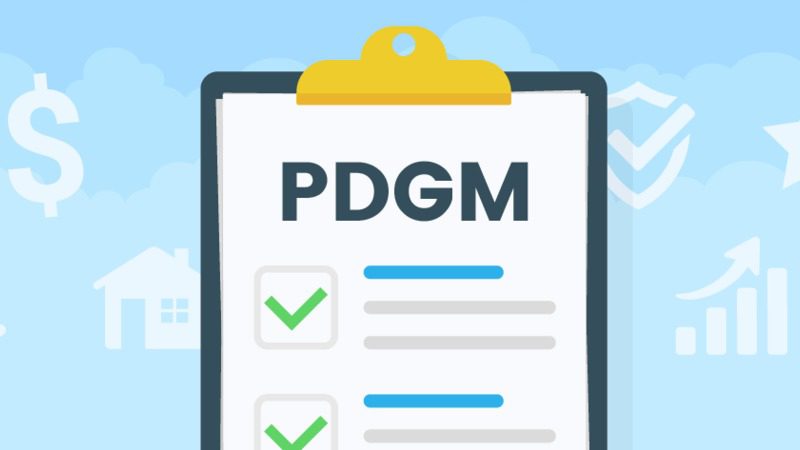PDGM Home Health is the major change the home healthcare industry has seen in years. Patient-Driven Groupings Model (PDGM) is in effect. ZMB is here to help you, direct and prosper in this changing environment. Understanding the changes will help you stay compliant and improve patient outcomes.
The Centres for Medicare & Medicaid Services (CMS) is overhauling the home health potential payment system as they endure the modification toward value-based care.
The Patient-Driven Groupings Model (PDGM) is the main jumping change to the home health reimbursement system. It has an intent of improved align reimbursement with patient requirements.
What is PDGM?
PDGM is an overhauled type of the Home Health Groupings Model (HHGM) that introduced–and then discontinued–in 2017 by CMS. It splits the payment periods in half and takes therapy volume out of consideration in defining home health agency (HHA) payments.
The Patient-Driven Groupings Model is a case-mix classification model for home health organizations. The model took effect on January 1, 2020, and is the largest change to the reimbursement system in nearly 20 years. The PDGM has a goal to grow organizations to concentrate more deeply on the clinical features of the patients they serve and eliminate the use of therapy service thresholds.
PDGM Home Health Summary?
PDGM was the Trump Government’s struggle to lessen Medicare expenses. PDGM is an effort to regulate what many in government felt was unnecessary expenditure on therapies. The Medicare Payment Advisory Commission reports that therapy appointments raised from 10% of home health visits in 1997 to 39% in 2016. In that time, Medicare spent about $18 billion on home care for about 3.4 million beneficiaries. Then Medicare spending on home health care doubled between 2001 and 2016.
In 2018, centres for Medicare and Medicaid Services (CMS) eliminate therapy volume as a factor of home health payments. After considerable back-and-forth, CMS implemented the PDGM model, which took effect in January. These rules apply to capable home health care by a nurse or therapist but not long-term personal care, which Medicare does not recompense.
What information is needed when billing for PDGM?
As per CMS, the application of PDGM requires a lot of changes for home health agencies, including:
- The update and revision of agency policies.
- Procedures and claims management.
- Staff education and training.
- The update and revision of relevant manuals.
The features that allow organizations to stay compliant and effectively manage billing plan changes under PDGM are:
- Under PDGM30-Day Claim Creation, claims will automatically generate in two 30-day billing periods per episode.
- 30-Day RAP Verification
- PDGM Occurrence Codes that will automatically be completed based on data entered in the OASIS.
- Claim Amounts
- Each PGDM billing period will be assigned a LUPA threshold from the corresponding OASIS assessment.
- Pre-claim review documents to be submitted for the entire 60-day episode and return UTNs for each billing period.
What does a physical therapist need to know about PDGM?
There has been a concern about PDGM and how it affects billing procedures. Though PDGM is the most important monitoring and reimbursement improvement for home health agencies in 20 years. But it doesn’t mean therapy practices need to worry about it. However, it does need some understanding that what it is and how it will affect your practice.
PDGM drive HHAs to renovate and better align their working model with a U.S. healthcare industry. It is evolving to care initiatives that are value-based, rather than volume-based.
Here is what the physical therapist needs to know that has changed with PDGM:
- New Payment Episode Timings
- PDGM increase the number of payment groupings and unique case-mix potential from 153 to 432.
- PDGM eliminates therapy thresholds as a primary determinant of reimbursement.
- The number of claims and Requests for Anticipated Payments (RAPs) submissions are likely to double under PDGM.
- Each Home Health Resource Group (HHRG) will have its own LUPA visit threshold and the LUPA count will reset every 30-day payment period.
- 40% of the diagnoses permitted for under PPS will not be accepted as primary diagnoses under PDGM.
How will PDGM affect Colorado non-skilled Home Care Agencies?
PDGM has revolutionized the payment procedure for all Medicare Home Health Agencies in the U.S. including Colorado. It is one of the healthiest state and a wonderful place for older adults to involve in extra activities and many forms of value-driven engagement.
The most consequential changes to impact home health in Colorado in decades happens in 2020. PDGM eliminates therapy-visit volume which means therapy will no longer be a guaranteed revenue-driver for home health agencies. Home health agencies are directed to consult with therapists to guarantee that patients continue to have the services they need because of PDGM.
You can Contact ZEE Medical Billing for a free analysis to solve all your medical billing problems and ramp up your revenue.





